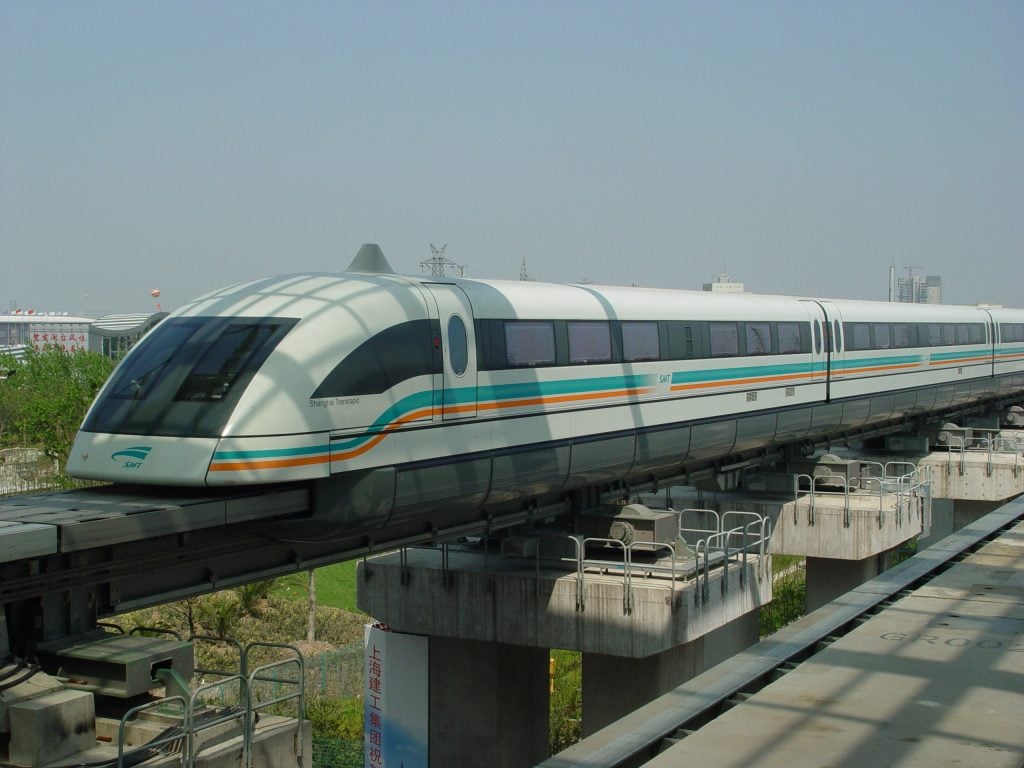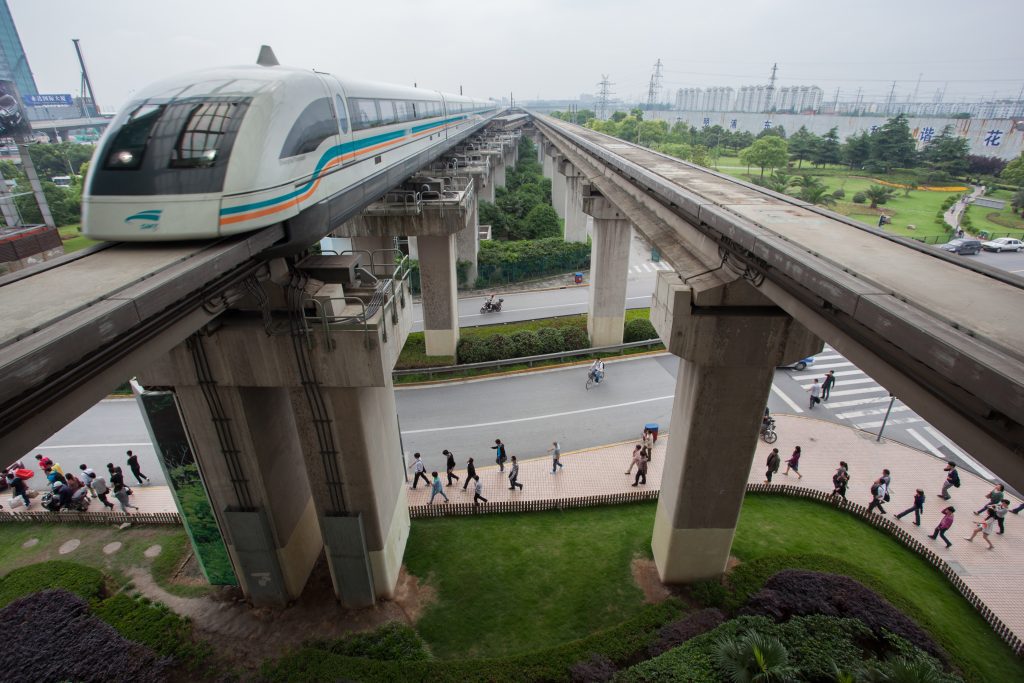Maglev: The Fastest Train Ever Built
Magnetic levitation (Maglev) is a train transport system that provides an alternative means of traveling on land. The power of its magnetic field is significantly increased through the use of two sets of superconducting magnets which, during use, are cooled to extreme temperatures.

One set of electromagnets is used to repel and push the train up and another set to move the lofty train ahead above a U-shaped concrete pathway, taking advantage of the absence of friction (which stems from train wheels on rails). Air resistance is still a factor, but the reduced friction allows the train to reach higher speeds. Presently, maglev technology has produced trains that can travel over 500km/hr.
The first patent for a train design using maglev went to James Powell and Gordon Danby of Brookhaven in the late 1960s. According to Powell, the idea first struck him while he was stuck in a traffic jam. Like many frustrated drivers, he was left wondering if there was a better method of land travel other than trains and cars.

Aside from high speed and bypassing traffic jams, another benefit of maglev is the smooth trip passengers experience due to less turbulence compared to traditional trains. And, best of all, additional perks include increased safety.
Six maglev systems are presently in use commercially as of today. One is in Japan, South Korea has two, and three are in China, with the longest commercial maglev system in Shanghai. While this level of sophistication is currently absent elsewhere in the world, it’s only a matter of time till all the citizens of the world start benefitting from maglev systems as plans are underway to develop them.
